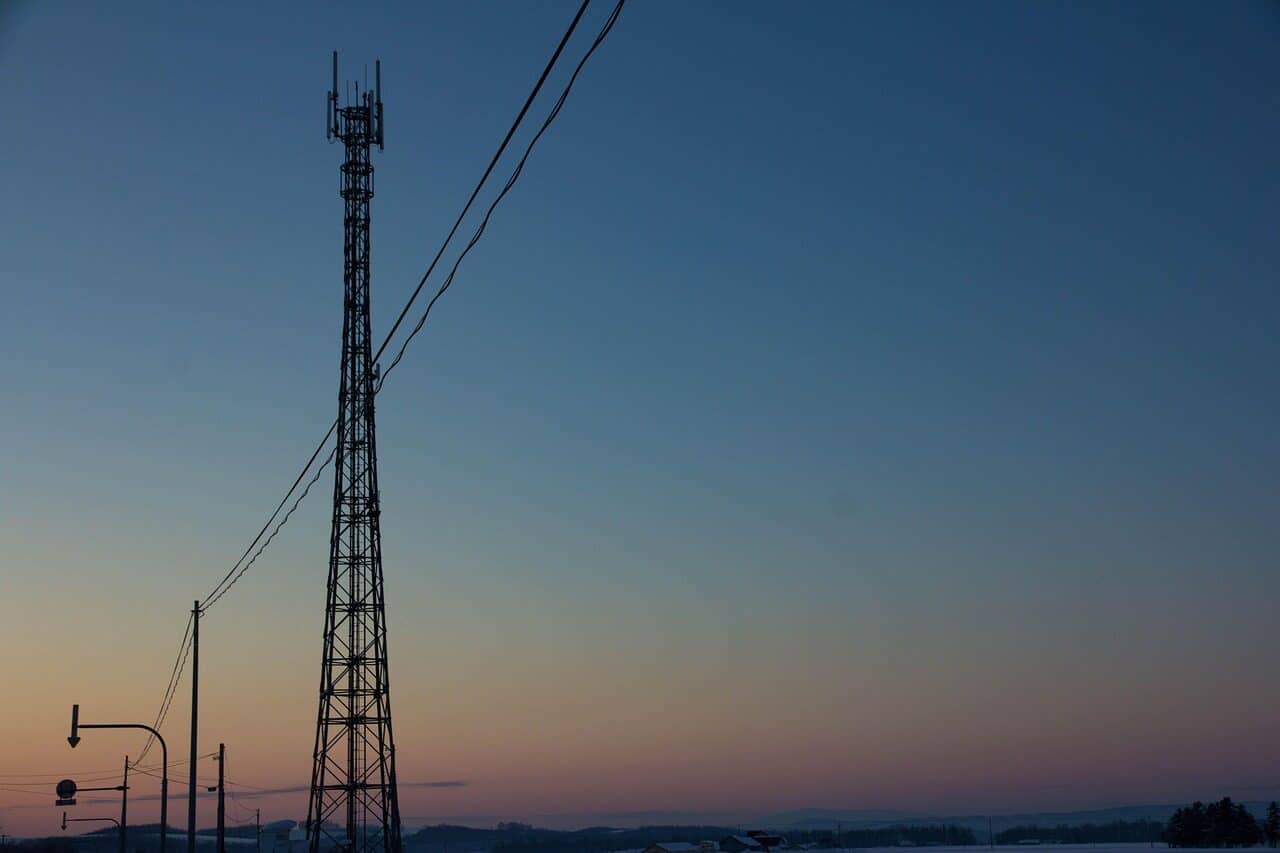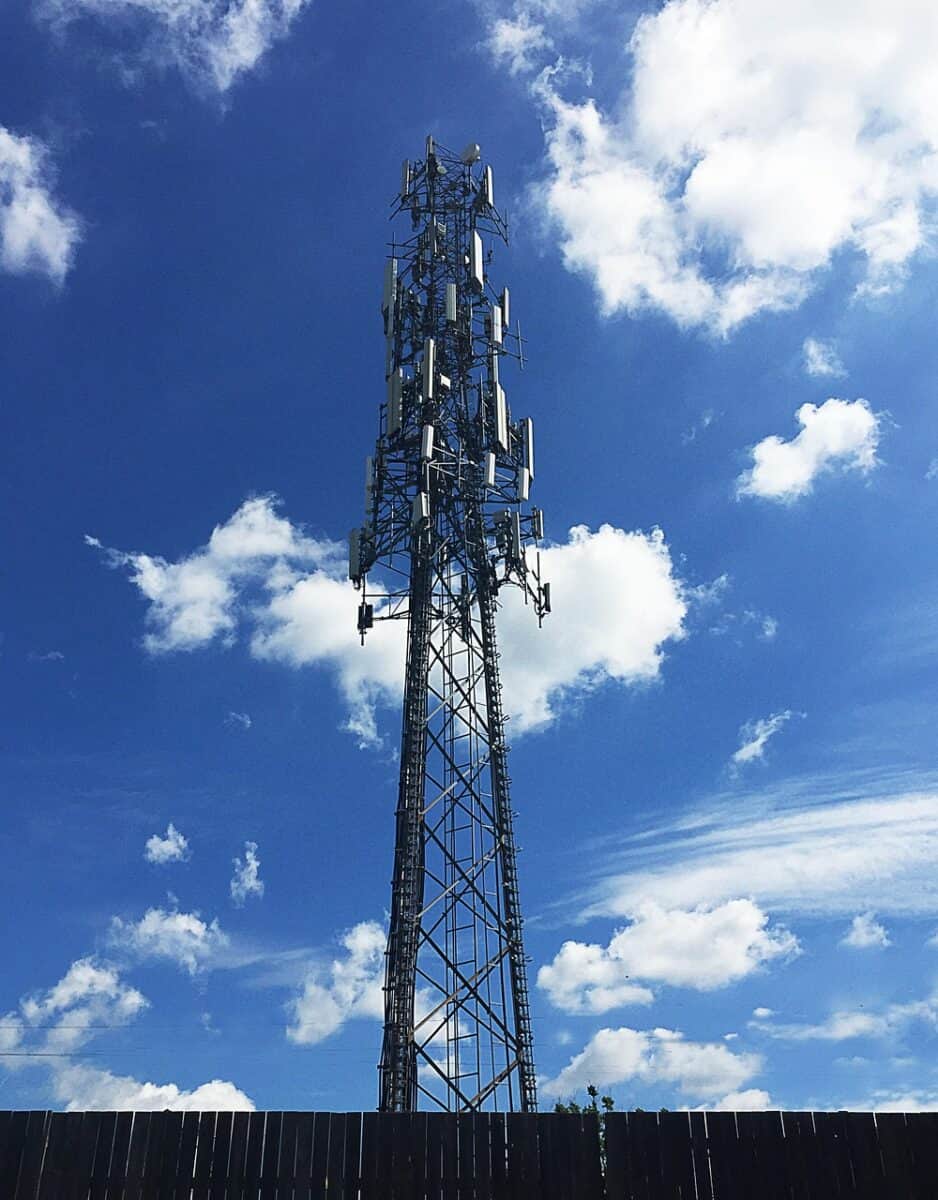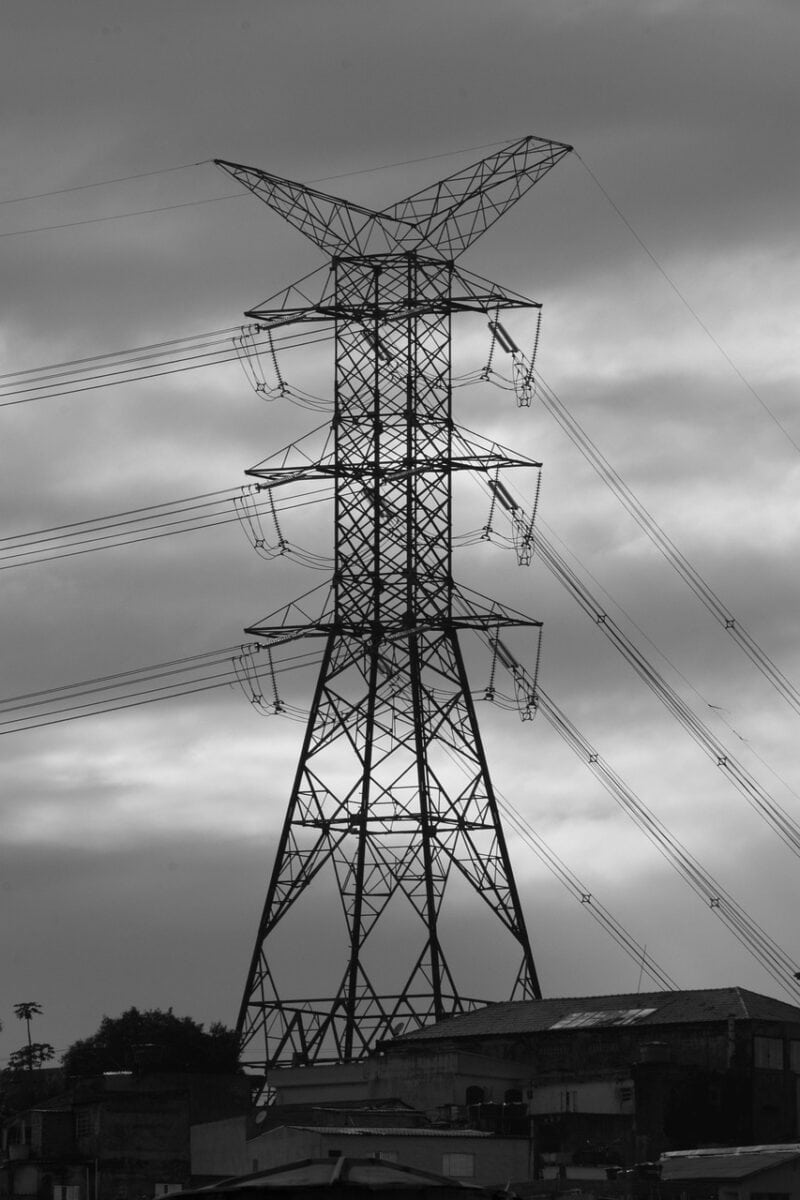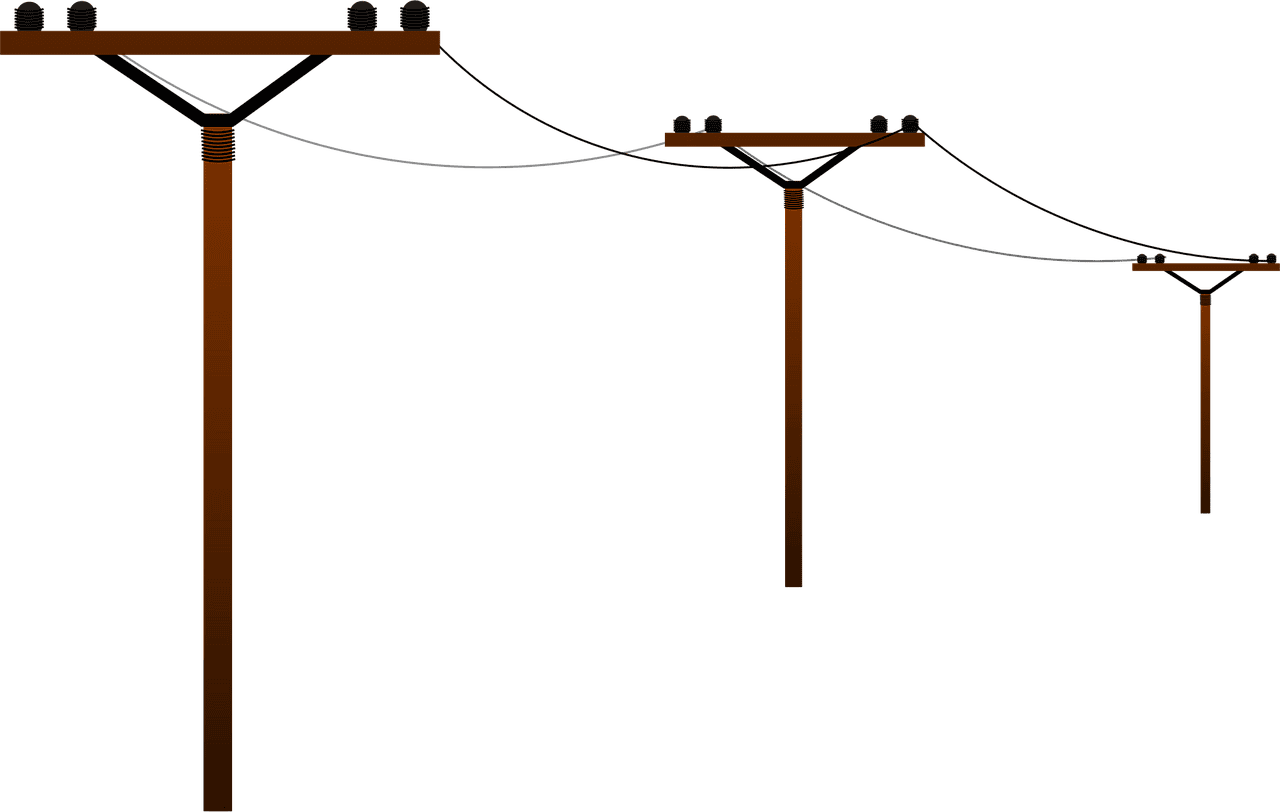The Engineer’s Guide to Tower Connections: A Deep Dive into Technical Principles
In structural engineering, a tower connection is the assembly of parts that joins different structural pieces, such as legs, braces, or sections of a tower. Its main job is to transfer calculated loads—including tension, compression, and shear—between these pieces, making sure the entire structure stays stable, strong, and works as one unit. Whether for a telecommunications monopole, a power transmission lattice tower, or an observation structure, the connection is the most important link in the structural chain. A failure at just one connection point can cause the entire tower to collapse. This article provides a complete technical analysis of the principles, types, materials, and design considerations that make tower connections strong and reliable.
We will provide a detailed examination of the following key topics:
- Basic connection types and their specific uses.
- Material science principles and selection criteria for steel and fasteners.
- Core design principles, load analysis, and governing industry standards.
- Common failure modes and best practices for inspection and maintenance.
- Future innovations in connection technology and structural health monitoring.
A Complete Connection Classification
Understanding the main types of tower connections is essential for any engineer involved in tower design, analysis, or maintenance. Each method has distinct mechanical characteristics, advantages, and limitations that determine whether it’s suitable for a given application. The choice of connection type influences not only the structural performance but also the cost of fabrication, construction, and long-term maintenance. Here, we categorize and explain the main connection types used in modern tower construction.
Bolted Connections
Bolted connections are the most common method in tower construction, especially for field assembly, because they are reliable and easy to install. They are broadly classified into two categories based on how they transfer loads.
Bearing-type connections are designed to transfer load mainly through shear in the bolts and bearing on the material of the connected pieces. As load is applied, the pieces may slip until the bolt shank comes into contact with the sides of the bolt holes. At this point, the load is transferred directly. This type is simpler to design and install but is more likely to loosen under vibrating loads and has lower fatigue resistance. The potential for hole stretching under repeated load reversals makes it less suitable for joints experiencing significant load changes. They are often used for secondary bracing or less critical joints in a lattice structure.
Friction-type connections, also known as slip-critical connections, are the industry standard for major structural joints. In this design, high-strength bolts are tightened to a specified minimum value, creating a significant clamping force between the touching surfaces of the connected plates. Load is transferred by the static friction created by this clamping force. The connection is designed so that applied service loads do not overcome this frictional resistance, preventing slip at the joint. This eliminates the concerns of hole stretching and provides superior performance under cyclic and dynamic loading, making it ideal for resisting fatigue. Common sub-types include flange plate connections, which are common in monopoles and tubular towers for joining sections, and lapped connections, which are standard for joining the angle members of a lattice tower.
Welded Connections
Welded connections create solid, continuous joints by fusing the metal of the connected pieces. This results in a rigid connection with high strength and a clean appearance, as it eliminates the need for gusset plates and bolts.
The main distinction is between shop welds and field welds. Shop welds are performed in a controlled factory environment, allowing for superior quality control, optimal positioning, and the use of automated processes. This generally results in higher-quality, more cost-effective welds. Field welds are performed on-site, often in challenging conditions, which complicates quality control and increases costs. Field welding is typically reserved for repairs or situations where transporting large, pre-assembled sections is not feasible.
Common weld types in tower applications include fillet welds, used to join overlapped plates or attach members to gusset plates, and butt welds (typically full penetration), used to join the ends of members, such as in the fabrication of tubular pole sections. Despite their strength, welded connections present challenges. They are more likely to have fatigue failure starting from microscopic weld defects, and residual stresses caused by the welding process can affect performance. Inspection is also more complex, often requiring non-destructive testing (NDT) methods to ensure integrity. Furthermore, field repairs of welded joints are significantly more difficult than replacing a bolt.
Pinned and Hinged Connections
Pinned or hinged connections are designed to allow rotation about a single axis while preventing translation in two axes. The load is transferred through shear and bearing on a large-diameter pin. This type of connection is modeled in analysis as an ideal hinge, which simplifies the calculation of forces within the structure by preventing the transfer of bending moments across the joint.
Their application in towers is specialized. They are most commonly found at the base of some guyed masts or self-supporting towers, allowing the structure to rotate slightly under load and simplifying the foundation design. They may also be used in specific articulated tower designs or as part of mechanisms for raising and lowering a tower. The primary design concerns for pinned connections are the high stress concentrations that occur at the pinhole and the potential for wear on the pin and hole surfaces over time.
Comparative Analysis of Connections
To provide a clear overview, the following table compares the key attributes of each primary connection method. This allows engineers to make informed decisions based on the specific demands of their project.
| Connection Type | Primary Load Transfer | Common Use Cases | Advantages | Disadvantages |
| Bolted (Friction) | Friction between plates | Monopole flanges, lattice towers | High reliability, replaceable, good fatigue life | Requires precise torqueing, potential for bolt loosening |
| Bolted (Bearing) | Shear on bolts | Secondary bracing, less critical joints | Simpler to design and install | Lower fatigue resistance, potential for hole ovalization |
| Welded | Fused metal | Base plates, shop-fabricated sections | High rigidity, clean aesthetic | Difficult field repair, requires NDT, susceptible to fatigue |
| Pinned | Bearing on pin | Tower bases, specialized structures | Allows for rotation, simplifies analysis | Concentrated stress at pinhole, subject to wear |
The Science of Materials
The long-term performance and safety of a tower connection are directly dependent on the materials from which it is built. Selecting the appropriate steel for members and plates, along with the correct grade of fasteners, is a critical design step governed by established industry standards and a deep understanding of material science. The primary considerations are strength, ductility, weldability, and, most importantly, resistance to environmental damage.

High-Strength Structural Steel
The vast majority of tower connections use structural steel for plates, gussets, and members. The specific grade is chosen to balance strength, cost, and ability to be fabricated. Common grades specified by the American Society for Testing and Materials (ASTM) include:
- ASTM A36: A carbon structural steel with a minimum yield strength of 36 ksi (250 MPa). It is a cost-effective, general-purpose steel with excellent weldability and is often used for less critical components, gusset plates, or in older tower designs.
- ASTM A572 Grade 50: A high-strength, low-alloy (HSLA) steel with a minimum yield strength of 50 ksi (345 MPa). Its higher strength-to-weight ratio compared to A36 allows for lighter and more efficient designs, making it a common choice for main structural members and connection plates in modern towers.
- ASTM A992: This steel has largely replaced A572 Grade 50 for wide-flange structural shapes. It has a specified yield strength range of 50-65 ksi (345-450 MPa) and is controlled for a maximum yield-to-tensile strength ratio, which provides better performance in seismic applications.
The Critical Role of Bolts
In bolted connections, the fasteners are arguably the most critical components. High-strength structural bolts are specifically designed for this purpose. The two primary ASTM standards are:
- ASTM A325 / A325M: These are standard high-strength structural bolts made from medium-carbon steel. They have a minimum tensile strength of 120 ksi (825 MPa) for diameters up to 1 inch. They are designed for use in both bearing-type and slip-critical connections.
- ASTM A490 / A490M: These are higher-strength bolts made from acero aleado, with a minimum tensile strength of 150 ksi (1035 MPa). They are used in applications requiring greater pre-tension and clamping force or where connection size must be minimized. They are more brittle than A325 bolts and have specific restrictions regarding galvanization.
It is essential to use a complete fastening system where the nuts and washers are matched to the bolt grade. ASTM A563 nuts and F436 washers are specified for use with A325 and A490 bolts to ensure the assembly can develop the required tension without failure.

Corrosion Protection
Given that towers are exposed to the elements for decades, corrosion protection is not an afterthought but a primary design consideration. The most effective and widely used method for protecting steel connections is hot-dip galvanization. In this process, the fabricated steel components are submerged in a bath of molten zinc. The zinc forms a metallurgical bond with the steel, creating a durable, abrasion-resistant coating that provides both barrier and cathodic protection. The process and coating thickness are governed by standards like ASTM A123 for structural steel products and ASTM A153 for hardware like bolts and nuts.
In some environments or for aesthetic reasons, paint and coating systems may be used in addition to or instead of galvanization. These multi-layer systems typically consist of a zinc-rich primer, an intermediate coat, and a durable topcoat.
A critical concern in connections is the potential for crevice corrosion, which can occur in the tight gaps between plates, and galvanic corrosion, which can happen if dissimilar metals are in contact in the presence of an electrolyte. Proper design and material selection, such as using galvanized fasteners with galvanized steel, reduce these risks.
Material Design Properties
The table below summarizes the key mechanical properties of materials commonly used in tower connections, providing a reference for design engineers.
| Material (ASTM Standard) | Component Type | Minimum Yield Strength (ksi / MPa) | Minimum Tensile Strength (ksi / MPa) | Key Characteristic |
| A36 Steel | Plates, Angles | 36 / 250 | 58-80 / 400-550 | General purpose, good weldability |
| A572 Grade 50 Steel | Plates, Shapes | 50 / 345 | 65 / 450 | Higher strength-to-weight ratio than A36 |
| A325 Bolt | Pernos | 85 or 92 / 585 or 635 | 120 / 825 | Standard high-strength structural bolt |
| A490 Bolt | Pernos | 115 or 120 / 795 or 825 | 150 / 1035 | Higher strength for more demanding loads |
Core Engineering Principles
The design of a tower connection is a careful process based on the principles of engineering mechanics and governed by industry-specific codes. A successful design ensures that all potential failure modes have been considered and that the connection has enough capacity to resist the factored loads it will experience over its service life. This section goes into the technical heart of connection design.
Understanding Load Paths
The first step in any connection design is to understand the forces it must transfer. Loads on a tower—including dead loads (self-weight), ice loads, and dynamic wind loads—are calculated for the entire structure. These global forces are then broken down into axial forces (tension or compression) and shear forces in the individual members that meet at a connection. The connection’s purpose is to provide a continuous load path for these forces. For example, in a lattice tower, the compressive force from a diagonal brace must be transferred through a gusset plate and into the main tower leg. A clear understanding of this path is essential to properly size the plates, welds, and bolts.
Design codes like TIA-222-H (Structural Standard for Antenna Supporting Structures and Antennas) or Eurocode 3 (Design of steel structures) provide methods for determining these loads and specify load combinations. These combinations pair different load types (e.g., 1.2 * Dead Load + 1.6 * Wind Load) to simulate worst-case scenarios, and the connection must be designed to resist the forces resulting from each governing combination.

Stress, Strain, and Failure
A connection must be checked against several potential failure modes. Each mode corresponds to a specific type of stress exceeding the material’s capacity.
- Tension: Tensile forces can cause failure by bolt fracture or by yielding and subsequent fracture of the connected plates (net section fracture).
- Shear: Shear forces act to slice through a bolt. The design must ensure the bolt’s shear strength is adequate. In plates, block shear is a failure mode involving a combination of shear along one plane and tension on a perpendicular plane.
- Bearing: This is a crushing failure that occurs when a bolt shank exerts excessive pressure against the side of its hole, causing the hole to elongate or tear out. The design limits the bearing stress on the projected area of the bolt.
- Bending: In connections like monopole flanges, eccentric loads can cause prying action, which creates additional bending and tension in the bolts beyond the initial applied load. This prying force must be accounted for in the design.
- Fatigue: Cyclic loading, most commonly from wind-induced vibrations like vortex shedding, can cause microscopic cracks to start and grow over time, leading to failure at a stress level far below the material’s static tensile strength. Slip-critical connections and smooth weld profiles are critical for improving fatigue life.
The Physics of Slip-Critical Joints
The reliability of a slip-critical connection depends on achieving and maintaining a specific clamping force. The nominal slip resistance (Rs) of a single bolt is calculated using the formula: Rs = μ * Tb * Ns, where:
- μ (mu) is the mean slip coefficient for the contacting surfaces. This value depends on the surface preparation (e.g., unpainted clean mill scale, galvanized).
- Tb is the minimum required bolt pre-tension, a value specified by standards based on the bolt’s size and grade.
- Ns is the number of slip planes (contacting surfaces) transferring the load.
To ensure the required pre-tension (Tb) is achieved in the field, standardized installation methods are mandatory. The most common are the turn-of-nut method, where the nut is rotated a specific amount from a snug-tight condition; the use of a calibrated wrench to apply a target torque; and the use of direct tension indicators (DTIs), which are special washers that deform visibly when the correct tension is reached.
Applying Finite Element Analysis
While hand calculations based on code provisions are sufficient for standard connection geometries, complex or non-standard joints benefit from Finite Element Analysis (FEA). FEA is a powerful computational tool that allows engineers to create a detailed digital model of the connection. The model is broken down into a mesh of small “finite elements,” and software solves the complex equations of stress and strain for each element.
The value of FEA is its ability to reveal complex stress distributions that are not apparent from simplified calculations. A color-coded stress plot from an FEA model can visually identify high-stress “hot spots,” typically at sharp corners or around bolt holes. This allows the designer to optimize the geometry—for example, by adding a radius to a corner or adjusting plate thickness—to reduce stress concentrations and improve the connection’s efficiency and fatigue resistance. This modern approach represents a higher level of engineering analysis, moving beyond basic code checks to a more fundamental understanding of the connection’s behavior under load.
Inspection and Maintenance
A properly designed and installed tower connection is only as reliable as its long-term maintenance program. Regular inspection is crucial for identifying and reducing potential issues like corrosion, bolt loosening, and fatigue cracking before they compromise structural integrity. This section provides practical guidance on inspection best practices and analyzes a common failure mode.
Best Inspection Practices
A comprehensive inspection program incorporates multiple methods and is performed at regular intervals by qualified personnel.
Visual inspection is the first line of defense. Inspectors look for obvious signs of distress, such as rust streaks coming from bolt holes or plate edges (indicating corrosion), damaged or peeling coatings, bent or deformed plates, and visible gaps between connected members.
Physical and sound inspection involves physically checking components. This can include tap-testing bolts with a hammer; a tight bolt will emit a clear ringing sound, while a loose one will produce a dull thud. Checking for loose or missing nuts and washers is also a fundamental part of this process.
For critical connections or when a defect is suspected, Non-Destructive Testing (NDT) provides a more in-depth assessment. Magnetic Particle Testing (MPT) can be used to detect surface-level cracks in welds and plates. Ultrasonic Testing (UT) uses high-frequency sound waves to detect internal flaws within bolts or plates, such as fatigue cracks that have not yet reached the surface.
The following checklist outlines a typical routine inspection plan for tower connections.
| Inspection Item | Frequency | Method | Look For | Action if Found |
| Bolt Tightness | 1-3 Years | Visual, Torque Wrench | Loose/missing bolts, rust | Re-torque or replace per spec |
| Corrosion | Annual | Visual | Rust, pitting, coating failure | Clean and re-coat, assess section loss |
| Structural Cracks | 1-3 Years | Visual, Dye Penetrant | Cracks near welds/bolt holes | Immediate engineering review |
| Deformation | Post-event, Annual | Visual, Measurement | Bent plates, elongated holes | Engineering assessment required |
| Coating Integrity | Annual | Visual | Peeling, blistering, chalking | Repair coating system |
Case Study: Improper Bolt Torquing
The following scenario, based on real-world failure analyses, demonstrates how a procedural error can lead to catastrophic failure, highlighting the difference between having the right parts and using the right process.
The scenario involved a flanged monopole connection that failed during a moderate windstorm, well below its design wind speed. The tower section buckled at the flange, leading to a complete structural collapse.
The subsequent investigation focused on the failed connection. The high-strength bolts, nuts, and flange plates were all confirmed to be of the correct material grade and size as specified in the design drawings. However, a forensic analysis of the fracture surfaces on the bolts revealed clear evidence of fatigue failure, not a simple tensile overload. Further investigation into the construction records and crew interviews revealed that the bolts had been tightened using a standard impact wrench without any follow-up verification using a calibrated method like turn-of-nut or a torque wrench. The crew had assumed the impact wrench was sufficient.
The mechanism of failure was then clear. The unverified tightening process resulted in a bolt pre-tension that was significantly lower than the specified minimum. This insufficient clamping force meant that the connection’s frictional resistance was easily overcome by the cyclic wind loads. The joint began to slip with each gust of wind. This slip subjected the bolts to repeated shear and bending stresses—forces they were not designed to regularly endure. This cyclic loading started fatigue cracks at the thread roots of the bolts, which grew rapidly, leading to a premature failure of the entire bolt group.
The lesson from this case is profound: in a slip-critical connection, the integrity is derived from the clamping force, which is a direct result of the installation process. Having high-strength bolts is meaningless if they are not properly tensioned. This failure was not due to a flaw in the design or materials, but a critical lapse in construction quality control.
The Future of Connection Technology
The field of structural engineering is continuously evolving, and tower connections are no exception. Emerging technologies are poised to make these critical components stronger, more intelligent, and easier to manage over their lifecycle. These innovations promise to enhance the safety, resilience, and cost-effectiveness of tower infrastructure.
Smart Connections and Monitoring
The most significant trend is the integration of Structural Health Monitoring (SHM) systems directly into connections. This involves embedding or attaching sensors to monitor the state of the connection in real-time. Fiber-optic sensors can be bonded to plates to measure strain with incredible precision, providing direct insight into the loads the connection is experiencing. Piezoelectric sensors can detect acoustic emissions that may indicate crack initiation, while accelerometers can monitor vibrations that could lead to fatigue. This data can be transmitted wirelessly to a central system, providing a continuous health report and alerting asset managers to potential issues long before they are visible to an inspector.
Advanced Materials and Manufacturing
Research into new materials continues to push the boundaries of what is possible. Advanced high-strength steel alloys offer even better strength-to-weight ratios, allowing for more slender and efficient connection designs. For specialized applications, the use of carbon fiber composites for connection components is being explored, offering immense strength at a fraction of the weight of steel, along with superior corrosion resistance.
Furthermore, additive manufacturing, or 3D printing with metal, holds the potential to revolutionize connection fabrication. This technology allows for the creation of highly optimized, complex geometries that are impossible to produce with traditional cutting and welding. A connection could be printed as a single, seamless piece with material placed only where it is needed, reducing weight and eliminating the stress concentrations associated with welds.
Digital Twins and Predictive Maintenance
The data gathered from SHM systems will fuel the use of Digital Twins. A digital twin is a high-fidelity virtual replica of a physical tower, including its connections. This virtual model is continuously updated with real-world sensor data. By combining this data with advanced simulation and machine learning algorithms, the digital twin can be used to predict the future. It can forecast the remaining fatigue life of a connection based on the actual load cycles it has experienced, model the effects of corrosion, and predict when maintenance will be needed. This shifts the paradigm from reactive or scheduled maintenance to truly predictive maintenance, optimizing safety and minimizing lifecycle costs.
Conclusión
This deep dive into tower connections underscores their fundamental role in structural integrity. We have seen that a robust connection is not the result of a single choice, but a combination of correct design, appropriate materials, and careful maintenance. The selection of the right connection type—be it bolted, welded, or pinned—sets the foundation. The use of specified high-strength steels and fasteners, protected by effective corrosion prevention systems like hot-dip galvanization, ensures durability. Following rigorous design principles, guided by standards like TIA-222 and validated by tools such as FEA, ensures the capacity to handle all anticipated loads. Finally, a disciplined program of inspection and maintenance, as highlighted by the case study on improper bolting, is the final guarantee of long-term safety.
The connection is often the most complex and stress-concentrated point in a tower, and its performance dictates the performance of the entire structure. As we look to the future, ongoing innovations in smart sensors, advanced materials, and digital twin technology will continue to enhance our ability to design, monitor, and maintain these vital structures, ensuring they remain safe and resilient for decades to come.
- Bolted Joint Analysis – MechaniCalc https://mechanicalc.com/reference/bolted-joint-analysis
- Bolted Joint – Wikipedia https://en.wikipedia.org/wiki/Bolted_joint
- VDI 2230 Blatt 1 – VDI Standards https://www.vdi.de/en/home/vdi-standards/details/vdi-2230-blatt-1-systematic-calculation-of-highly-stressed-bolted-joints-joints-with-one-cylindrical-bolt
- Bolt Torque Calculator – Engineering ToolBox https://www.engineeringtoolbox.com/bolt-torque-load-calculator-d_2065.html
- MIL-HDBK-60 Threaded Fastener Preload – Engineering Library https://engineeringlibrary.org/reference/threaded-fastener-preload-mil-hdbk
- Fastener Torque – NASA Engineering Library https://engineeringlibrary.org/reference/fastener-torque-nasa-design-manual
- Fastener Design and Analysis – Engineers Edge https://www.engineersedge.com/fastener_thread_menu.shtml
- ASME PCC-1 Bolted Flange Joint Assembly https://www.hextechnology.com/articles/bolted-flange-joint-assembly/
- Specification for Structural Joints Using High-Strength Bolts – AISC https://www.aisc.org/globalassets/aisc/publications/standards/a348-20w.pdf
- ASME VIII Bolted Flange Design Guide – StaticEngineer https://staticengineer.com/asme-viii-div-1-bolted-flange-design-mandatory-appendix-2-guide-part-1/





